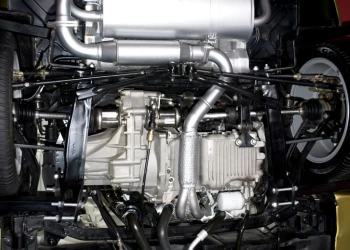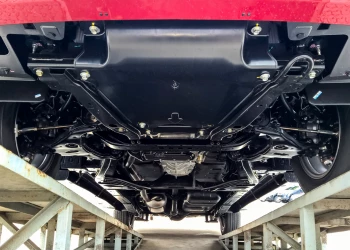China to Reverse the Tide of Luxury Vehicle Imports
Add bookmarkIn 2013, for the first time in history, China led the world in domestic vehicle sales. However in contrast to soaring domestic demand, overseas orders for China-made vehicles fell, thwarting the country’s plans to become a major auto exporter.
Image Credit: Wall Street Journal
Recently released data from China Association of Automotive Manufacturers (CAAM) shows that after surpassing 1 million units in 2012, shipments to buyers abroad fell 7.5% last year to 977,300 units. Automakers only exported a total of 596,300 passenger cars, 9.8% less than a year ago, and 381,000 commercial vehicles, down 3.5%. Within China, native players’ share of the passenger car market also experienced a decrease from 41.9% in 2012 to 40.3%.
Image credit: www.english.sina.com
These figures reflect continued weakness of native Chinese carmakers. While managing to remain profitable and even increase sales as overall demand soars, Chinese manufacturers are losing ground to foreign brands abroad and at home.
While on the export front, several Sino-foreign joint ventures have been working on increasing overseas sales; notably Shanghai-GM, SGMW, and Dongfeng-PSA, but the volume they posted in this regard remained very low.
In the first eleven months of 2013 top destinations for China-made vehicles were:
1. Algeria, 112,100
2. Russia, 84,100
3. Chile, 71,600
4. Iran, 50,200
5. Peru, 37,300
6. Columbia, 34,500
7. Egypt, 32,200
8. Iraq, 28,700
9. Uruguay, 28,500
10. Ukraine, 27,200
Glaringly absent in these export figures are exports to North America. Despite several attempts to penetrate this important yet elusive market, Chinese manufactured vehicles have yet to make an impression.
Chery was the first Chinese car company to enter the U.S. market. In 2005, Chery teamed up with Malcolm Bricklin’s Visionary Vehicles to import and sell a planned 250,000 sport utility vehicles, sedans, and sports coupes in the U.S. from 2007. Few industry observers believed this would succeed: Most quoting the lack of market experience and poor quality as a reason the venture would fail. After all, Chery had only sold 80,000 cars in China the year before, the company had no brand presence in the U.S. and everyone doubted Chery’s ability to meet the emissions, safety and quality requirements of sophisticated American consumers and legislation.
Geely, pre-Volvo, was the next Chinese manufacturer to enter the US market. Geely’s first-time appearance at the Detroit Auto Show in 2006 created substantial interest due to its previously announced plans to enter the U.S. market. At the annual show held in January, Geely generated public attention when it showcased its "China Dragon," along with other models it planned to export to the United States beginning in 2008. Geely said its goal was to land a basic model in dealer showrooms for $7,500. Like Chery, Geely’s initial effort to export its cars to the U.S. ended in failure.
While this dream has proven to be elusive, despite the ambitions and efforts of Chinese car makers to make it happen, it may at last become a reality in 2015 when Volvo is expected to begin exporting a long-wheel-based version of the S60 called the S60L, to the United States. At the same time the company is expected to export the XC90 SUV to Russia. Volvo will eventually export about 10,000 S60Ls and a few thousand XC90s each year. The fact that Volvo/ Geely may be the first Chinese manufacturer to penetrate the American market is a tribute to the vision and hard work of Geely and its founding chairman, dubbed the Henry Ford of China, Li Shufu: In a surprise acquisition in 2010, Geely bought the ailing Volvo from for about $1.8 billion. While the purchase of Volvo gave Geely a well-known international brand, the company was experiencing a slump in demand. According to Bloomberg, Volvo’s global sales of 335,000 cars were off 11 percent at the time of the sale, and 27 percent off their peak. In the two years prior to the acquisition, the Swedish car maker had lost $2.6 billion, leading many to wonder how Geely could possibly make it work.
Four years after taking over the Volvo nameplate, sales in China are booming as the company takes advantage of the continued growth of the country’s luxury car segment: Volvo’s China sales are likely to reach 90,000 cars in 2014, an increase of 47 percent over last year. This was just 77 vehicles short of European made deliveries to the United States, which dropped 10 percent to 61,223 last year. China is now Volvo’s biggest market globally and there is more growth to come.
Volvo is expected to become the first major automaker to sell a Chinese-built light vehicle into the American market. Volvo’s two assembly plants in China are capable of producing 250,000 units annually. Their stated goal is to begin utilizing these facilities to produce cars for the United States, Russia and possibly other markets such as Southeast Asia. The plant in the southwestern city of Chengdu began producing the S60L sedan late in 2013, and the second is working to increase production of the XC90 in the northeastern city of Daqing.
Geely's strategy for Volvo is being closely studied as a possible model for other Chinese companies that have had limited success digesting and managing major consumer brands, following multi-billion-dollar foreign acquisitions in recent years. After all if Geely could turn around the money-losing 87-year-old Swedish business while protecting its famous brand, there’s hope for the burgeoning Chinese motor industry. However a word of caution has come from an unexpected quarter: Global head of Volvo media relations David Ibison said that although Volvo's China sales had grown 35 percent year-on-year so far this year, selling 90,000 cars in 2014 could be "a step too far." The carmaker's focus is to make sure "our growth is profitable and sustainable," he said.
Sources:
The Dream Of Exporting China-Made Cars To The United States – Forbes (Jack Perkowski)
Volvo's China export plans mark new phase in Geely strategy – Reuters (Jason Lee)
Volvo to export China-made cars to U.S., Russia next year – Automotive News
Peter Els is a technical writer for Automotive IQ






















